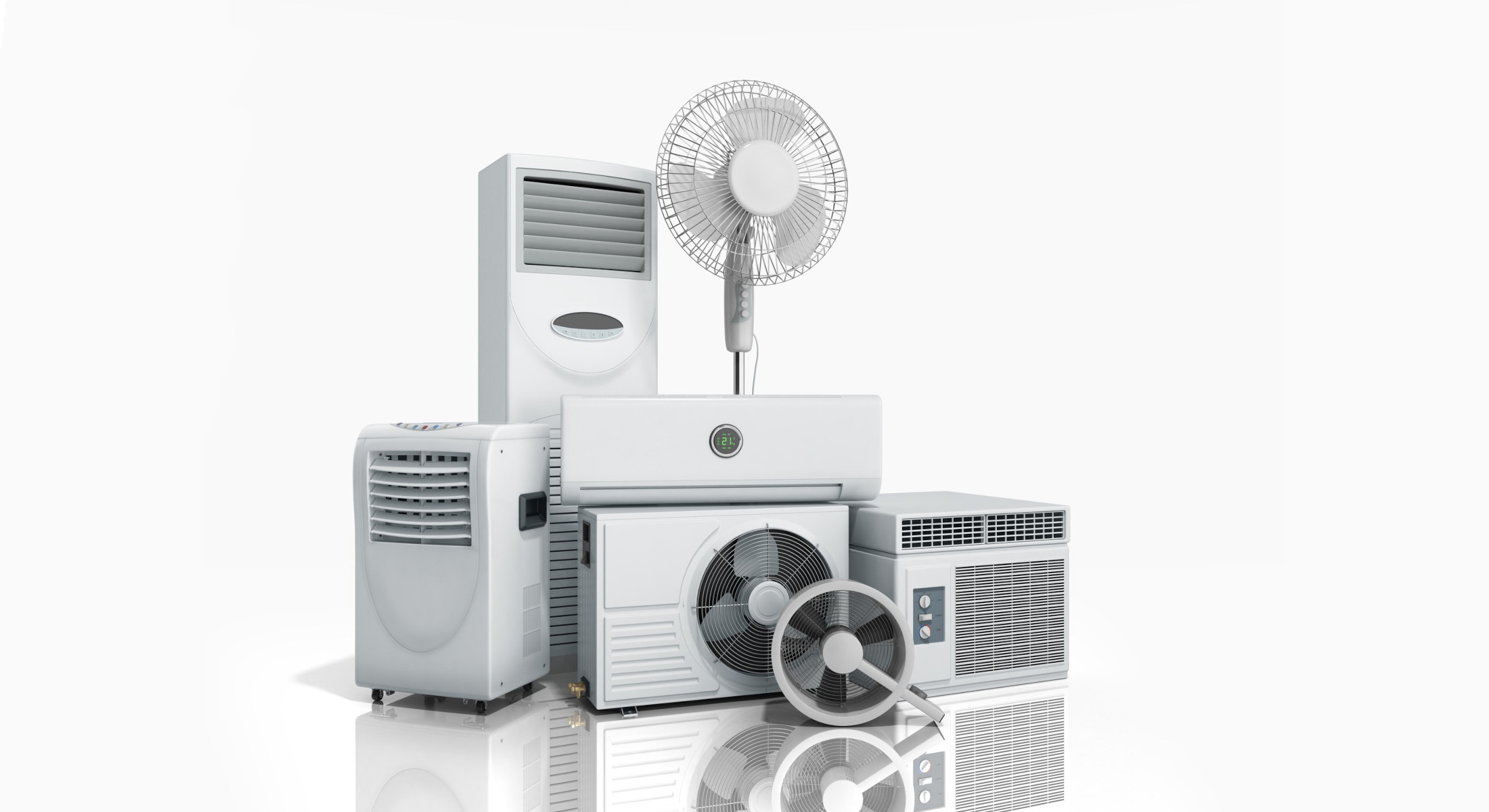
Growing concerns about climate change have highlighted the need for eco-friendly cooling systems that reduce our carbon footprint while maintaining indoor comfort. By choosing energy-efficient systems and environmentally friendly refrigerants, homeowners can make a significant difference in mitigating climate change effects.
Cooling Systems and Their Environmental Footprints
Central Air Conditioners
Central air conditioners are known for their high energy usage, especially during peak summer months. These systems often run continuously to maintain a comfortable indoor temperature, leading to substantial electricity consumption.
- Energy Consumption
Central air conditioners are known for their high energy usage, especially during peak summer months. These systems often run continuously to maintain a comfortable indoor temperature, leading to substantial electricity consumption. - Refrigerants Used
Many central air conditioners utilize hydrofluorocarbons (HFCs) as refrigerants. HFCs are potent greenhouse gases with a high global warming potential (GWP), contributing significantly to climate change. - Carbon Footprint
The carbon footprint of central air conditioners is considerable due to their high energy consumption and the environmental impact of the refrigerants used. To minimize this footprint, homeowners should consider investing in energy-efficient models and regular maintenance.
Ductless Mini-Splits
Ductless mini-splits are generally more energy-efficient than central air conditioners. They provide targeted cooling, which can reduce overall energy use by allowing different areas to be cooled individually.
- Energy Consumption
Ductless mini-splits are generally more energy-efficient than central air conditioners. They provide targeted cooling, which can reduce overall energy use by allowing different areas to be cooled individually. - Refrigerants Used
Ductless mini-splits often use more environmentally friendly refrigerants compared to traditional central air conditioners. These refrigerants have lower GWPs, making them a better choice for reducing environmental impact. - Carbon Footprint
The lower energy consumption and use of eco-friendly refrigerants result in a smaller carbon footprint for ductless mini-splits. They are an excellent option for homeowners looking to minimize their environmental impact.
Portable Air Conditioners
Portable air conditioners are typically less energy-efficient than ductless systems. While they offer flexibility and convenience for spot cooling, their energy consumption per unit of cooling is usually higher.
- Energy Consumption
Portable air conditioners are typically less energy-efficient than ductless systems. While they offer flexibility and convenience for spot cooling, their energy consumption per unit of cooling is usually higher. - Refrigerants Used
Like other air conditioning systems, portable air conditioners may use HFCs, contributing to their environmental impact. However, newer models are increasingly adopting more eco-friendly refrigerants. - Carbon Footprint
The carbon footprint of portable air conditioners is higher due to their lower energy efficiency and the potential environmental impact of their refrigerants. Homeowners should use them sparingly and opt for models with better energy ratings to reduce their footprint.
Factors Affecting the Environmental Impact of Cooling Systems
Energy Consumption
Energy efficiency in a cooling system is important for both environmental and economic reasons. Efficient systems use less electricity to achieve the same level of cooling, reducing greenhouse gas emissions and lowering utility bills.
To measure and compare the energy consumption of different cooling systems, look for the Energy Efficiency Ratio (EER) or Seasonal Energy Efficiency Ratio (SEER) ratings. Higher ratings indicate more efficient systems. Additionally, ENERGY STAR labels can help identify products that meet stringent energy efficiency guidelines.
Tips for choosing Energy-Efficient Systems:
- Look for ENERGY STAR Labels
- Consider SEER/EER Ratings
- Opt for Smart Thermostats
- Regular Maintenance
Refrigerants
Refrigerants can significantly affect the environment through their global warming potential (GWP) and ozone depletion potential (ODP). HFCs, although better than CFCs and HCFCs regarding ozone depletion, still contribute significantly to global warming.
The industry is moving towards refrigerants with lower GWPs and no ODP. Natural refrigerants and newer HFC alternatives are becoming more popular due to their reduced environmental impact.
Types of Refrigerants:
- CFCs (Chlorofluorocarbons)
These are now largely phased out due to their high ozone-depleting potential. - HCFCs (Hydrochlorofluorocarbons)
Less harmful than CFCs but still pose environmental risks. - HFCs (Hydrofluorocarbons)
Do not deplete the ozone layer but have a high global warming potential. - Natural Refrigerants
Include ammonia, CO2, and hydrocarbons, which are more environmentally friendly.
Overall Carbon Footprint
To calculate the carbon footprint of a cooling system, consider both direct emissions from refrigerant leakage and indirect emissions from energy consumption. Online calculators and tools provided by environmental organizations can help estimate these values.
A lifecycle analysis evaluates the environmental impact of a cooling system from manufacturing through disposal. This comprehensive approach ensures that all stages, including production, operation, and end-of-life disposal, are considered.
Ways to reduce Carbon Footprint:
- Regular Maintenance
Ensures optimal performance and prevents refrigerant leaks. - Upgrade to Efficient Models
Modern systems are designed to be more energy-efficient and use eco-friendly refrigerants. - Use Smart Thermostats
Optimize energy use and reduce unnecessary cooling. - Improve Home Insulation
Proper insulation reduces the need for extensive cooling, thereby lowering energy consumption.
Future Trends in Cooling Technology
The future of cooling technology is bright with several innovative solutions on the horizon. One such technology is magnetocaloric refrigeration, which uses magnetic fields to change the temperature of certain materials. This method is more energy-efficient and environmentally friendly compared to traditional vapor-compression refrigeration. Another emerging technology is electrocaloric cooling, which employs electric fields to produce cooling effects in certain materials, promising higher efficiency and reduced environmental impact.
In addition to these, advancements in thermoelectric cooling are also gaining attention. This technology uses semiconductor materials to create a temperature difference when an electric current is applied, offering a compact and silent cooling solution with potential applications in both residential and commercial settings.
Renewable Energy Integration
The integration of renewable energy sources like solar and wind power into cooling systems is another exciting trend. Solar cooling systems, for instance, use solar thermal energy to power absorption chillers, reducing reliance on grid electricity and lowering carbon emissions. These systems are particularly beneficial in sunny regions where cooling demand is high.
Wind-powered cooling systems are also being explored, where wind turbines generate electricity to power cooling systems, providing a sustainable and eco-friendly solution. The combination of renewable energy with traditional cooling technologies not only reduces environmental impact but also enhances energy security and cost savings for homeowners.
Smart Home Integration
Advances in smart home technology are revolutionizing the way we manage and optimize cooling systems. Smart thermostats, for instance, learn your daily routines and adjust temperatures automatically to maximize comfort and efficiency. These devices can be controlled remotely via smartphone apps, allowing homeowners to manage their cooling systems from anywhere.
Smart home ecosystems can integrate cooling systems with other home automation devices, such as lighting and security systems, to create a seamless and energy-efficient living environment. For example, smart sensors can detect when a room is unoccupied and adjust the cooling accordingly, reducing energy waste.
The future of cooling technology is not only about making systems more efficient but also about making them smarter and more sustainable. By embracing these emerging technologies and integrating renewable energy sources, homeowners can significantly reduce their environmental footprint while enjoying enhanced comfort and convenience.
Making Informed Choices for a Greener Future
Factors influencing the environmental impact of cooling systems include energy consumption, the types of refrigerants used, and the overall carbon footprint. Homeowners can minimize their impact through regular maintenance, upgrading to energy-efficient systems, using smart thermostats, choosing eco-friendly refrigerants, and ensuring proper home insulation.
As homeowners, considering the environmental implications of your cooling system choices is more important than ever. By opting for energy-efficient models and environmentally friendly refrigerants, you can significantly reduce your carbon footprint and contribute to a healthier planet.
For expert advice and eco-friendly solutions, contact The Boiler Shoppe. Our qualified team of engineers is ready to help you choose and maintain the best cooling system for your home, ensuring both comfort and sustainability.
